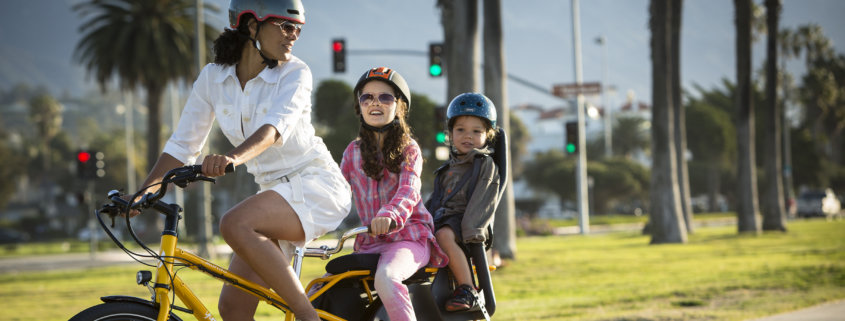Making California’s E-Bike Affordability Program Successful
Thanks to support from our members, CalBike won a $10 million appropriation in this year’s budget to help Californians purchase electric bikes. The California Air Resources Board will administer the program, which must be operating by July of 2022.
The program will distribute vouchers to people who meet income eligibility requirements. The CARB will release a Request for Proposals to implement the program in the next couple of months, detailing important goals and specifications to shape voucher distribution.
CalBike is working with CARB to help ensure that the implementation meets CalBike’s objectives for this program. Here’s what we know so far.
Which types of e-bikes are eligible for the voucher program?
“Electric bicycles eligible for the incentives include, but are not limited to, those designed for people with disabilities; utility bicycles for carrying equipment or passengers, including children; and folding bicycles.”
Who will be eligible for e-bike purchase incentives?
The Air Resources Board has signaled its intent to restrict eligibility to low-income households (defined as households with income less than four times the federal poverty level, or $51,520 for an individual, or $106,000 for a family of four). The income restriction is not required by law, and CARB’s electric vehicle incentive program doesn’t include any income requirements.
CalBike and the more than 50 organizations that supported the program advocated for at least 80% of the funds to go to low-income households. We wanted 20% of the vouchers available to middle-income families to allow for broader funding distribution. Plus, it would have recognized that, like EVs, e-bikes are a civic good, and the state wants to encourage people to choose this form of transportation.
CalBike supports this initial round of funding going exclusively to disadvantaged people. However, it will take more than a grant to make the program successful. The upfront cost of a quality e-bike will be out of reach for most low-income people, even with a hefty subsidy. To ensure that everyone can access this incentive, we want the program to include an arrangement with a lender to will provide low- or zero-interest loans to buyers so that they can pay for an e-bike in installments.
The role of community-based organizations
A bike purchase incentive program differs from an electric vehicle incentive program because many potential recipients don’t already recognize how a bike could improve their lives. Everyone (almost) wants a car and would welcome a purchase subsidy, but the same is not true for bikes.
That’s why CalBike sees an essential role for nonprofits in distributing the funds. If community organizations serving low-income people are able to make extremely low-cost e-bikes available to their constituencies, they can engage and educate about how to use the bike to replace car trips. A nonprofit can also provide bike safety information and classes, so grant recipients are confident to ride their e-bikes for transportation. With this support, the e-bike suddenly becomes a viable transportation choice and the subsidy a critical lifeline.
Community-based organizations can also help identify the people who would benefit most from a low-cost e-bike and help spread the word among their constituencies. Plus, they can assist with the paperwork to apply for the grants, and they might be able to combine this subsidy with other funding sources to make bikes truly affordable. These groups can also provide feedback to evaluate the impact of the e-bike affordability program.
The impact of $10M for e-bikes
If designed and administered well, California’s new e-bike affordability program could have an impact far beyond the lives of the people who will be able to buy e-bikes.
First, if CARB successfully markets the program, it will increase awareness of biking as a viable and green transportation option. That, we hope, will create demand to expand the program and increase the funding available to help people buy bikes. And the incentives will put thousands more bicycles on our streets, which will raise the visibility of biking, increase the pressure to build safe bikeways, and encourage more people to hop on a bike. Plus, up to 10% of the funding in this program may be used for bicycle education, so it’s a great opportunity to build skills and confidence for more riders.
We’ll keep you informed when there’s more to know about the e-bike affordability program. Sign up below to be the first to know when the e-bike vouchers become available.





